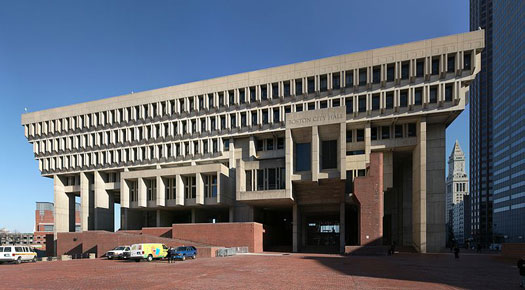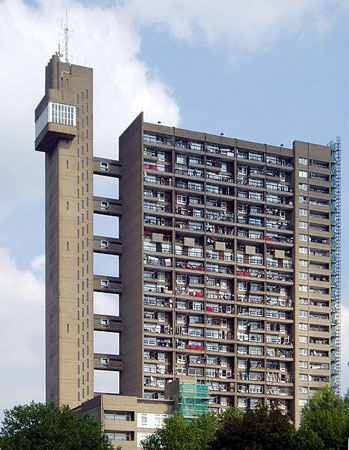Upon first utterance, it certainly doesn’t sound like a pleasant term. However, brutalism is a profound architectural and design movement that began in the early 1950s and continues to influence the design of buildings and other works even today.
When used in describing architecture, brutalism refers to a dynamic geometric style that is massive, monolithic and blocky in appearance, and typically contains copious amounts of poured concrete. The style was popular until the mid-1970s and first introduced to the world by the Sultan of Style himself, Le Corbusier. As an architect, designer, urbanist, writer and painter who demonstrated a command of design in its simplest and most utilitarian form, Le Corbusier brought a great degree of attention to the brutalist movement with the design of his Secretariat Building in Chandigarh, India. The building is a long, horizontal concrete slab form composed of six eight storied blocks separated by expansion joints and bears close resemblance to the architect’s earlier work, the Marseilles apartment block. Le Corbusier used to use the term brutalism to describe his own work, though it was originally coined by the British architects Alison and Peter Smithson. The term eventually became part of the common architectural lexicon when Reyner Banham used it in his book, “New Brutalism”. In many architectural and design circles, brutalism has been criticized for its uncommunicative and even “ugly” style. It has also been slammed for ignoring historic architectural precedent as well has empathy for its surrounding architectural environment. However, as Banham said in his book, brutalism “makes the whole conception of the building plain and comprehensible. No mystery, no romanticism, no obscurities about function and circulation.” Essentially, brutalism is a no-nonsense style, which is why we at Styleture are such fans of the movement.
Additional examples of brutalist architecture include: Queensland Art Gallery, Queensland, Australia; Philippine International Convention Center, Manila, Philippines; Yale Art and Architecture Building, New Haven, Connecticut; Trellick Tower, London, England; and the National Assembly Building of Bangladesh, Dhaka, Bangladesh.



